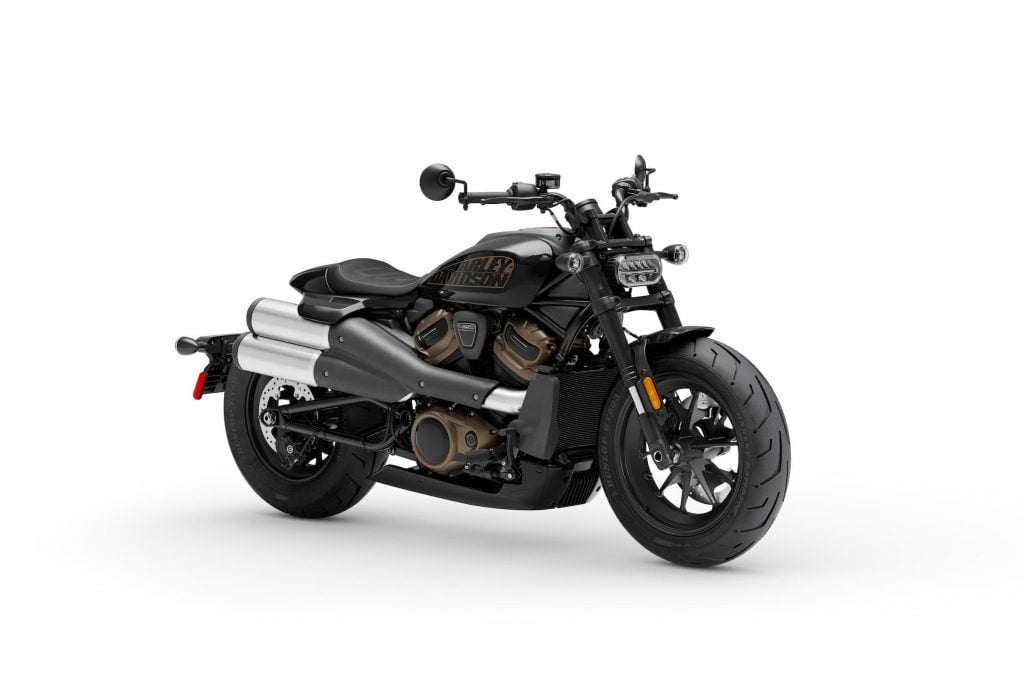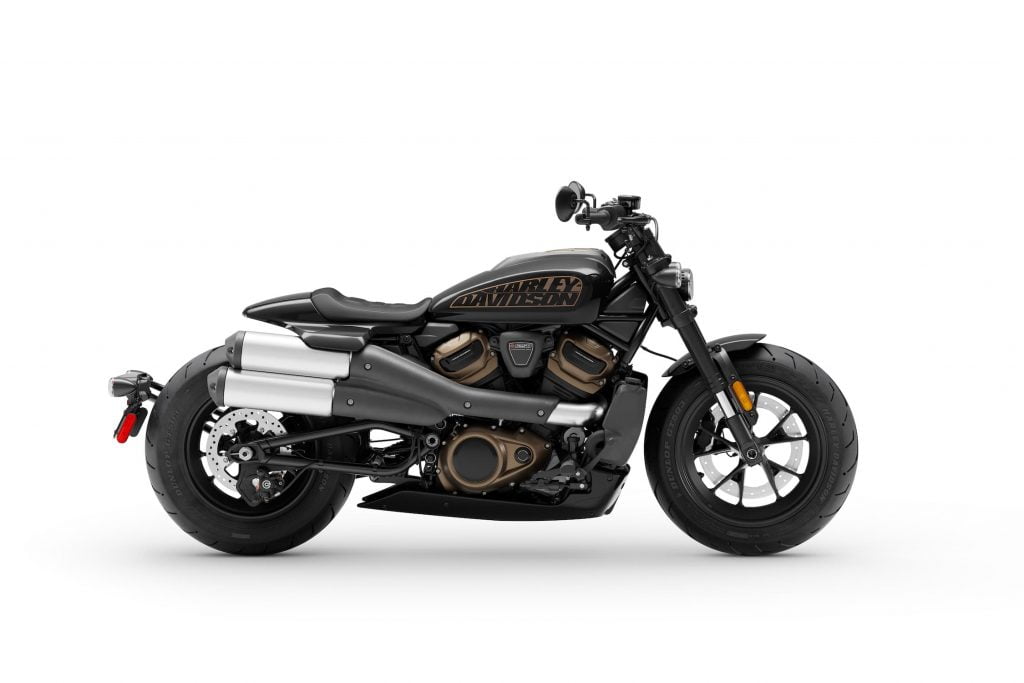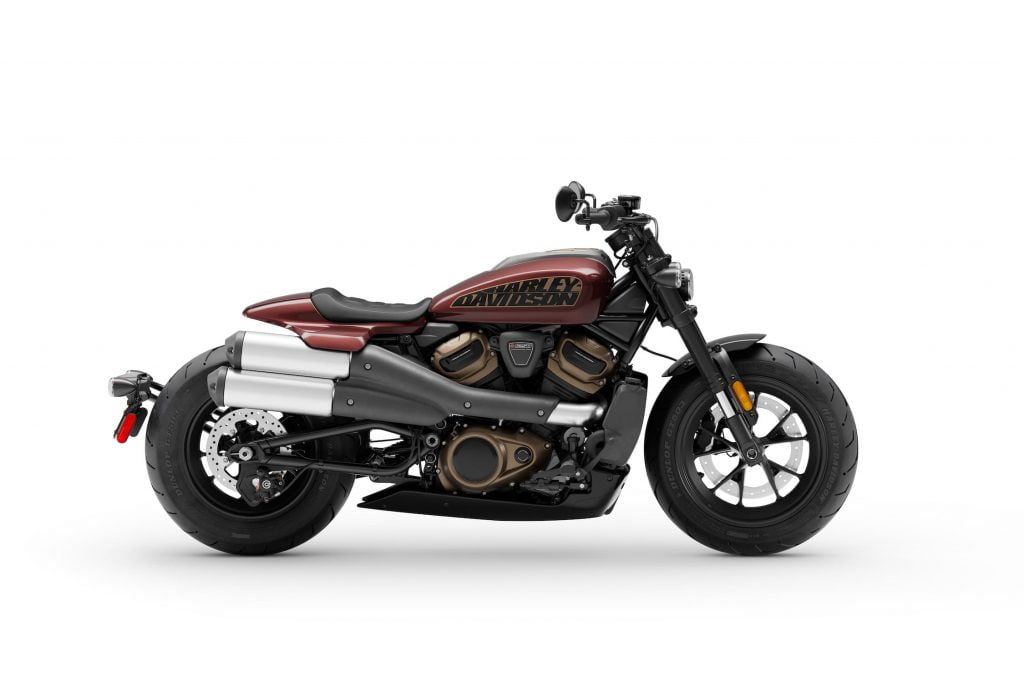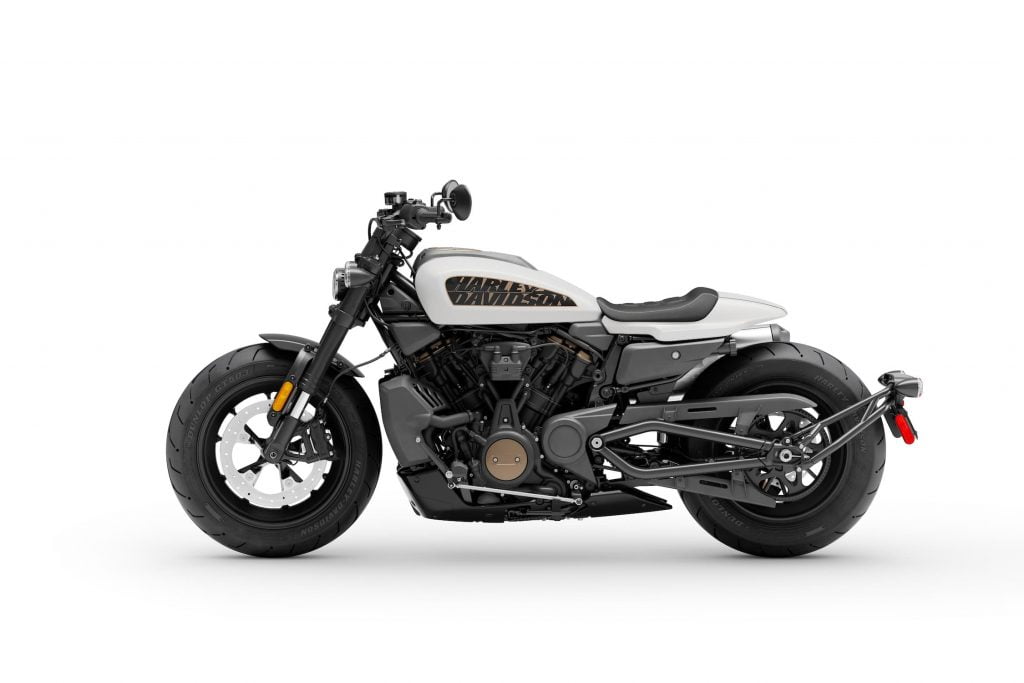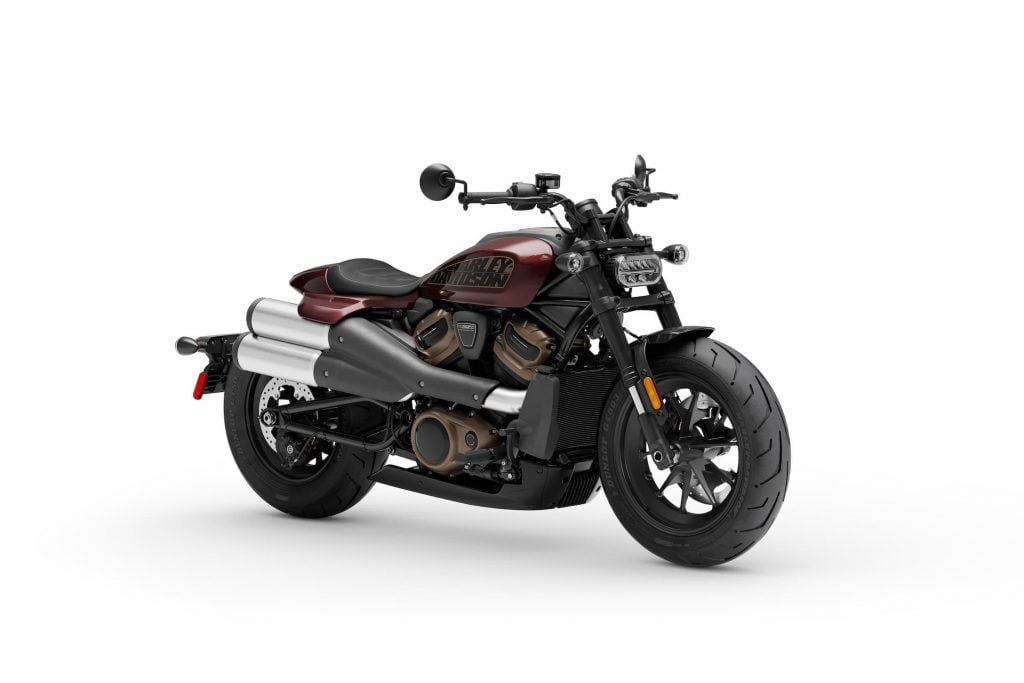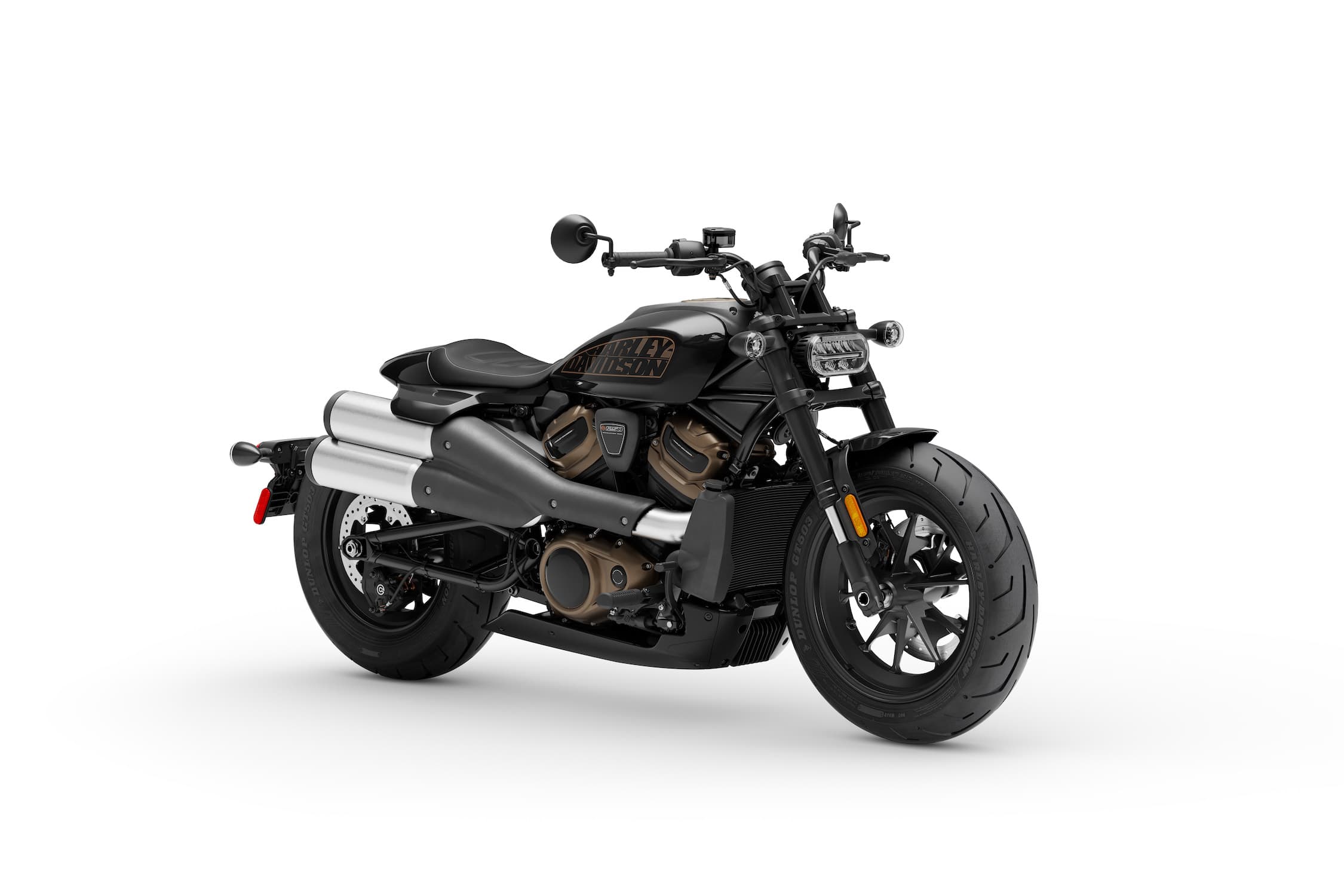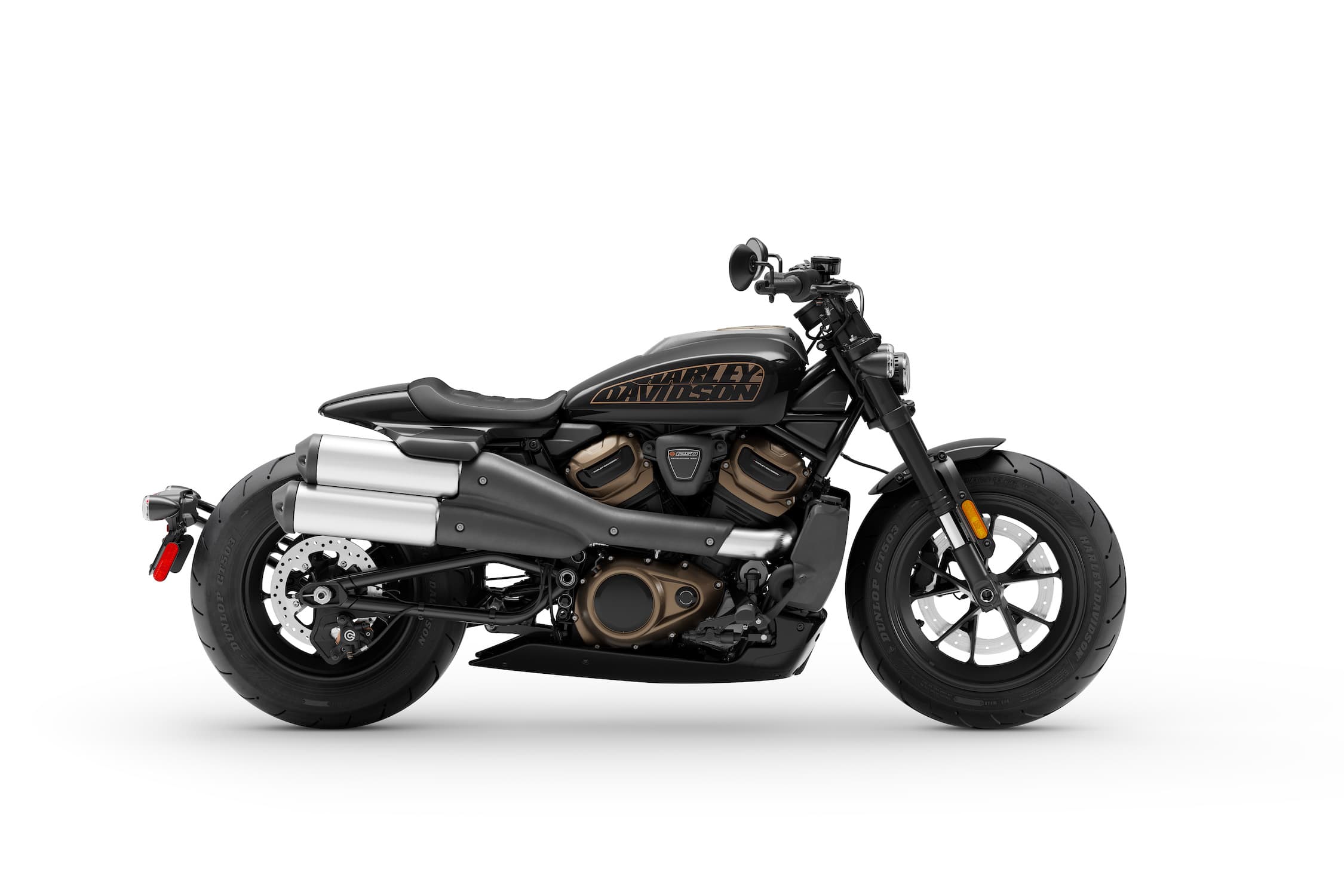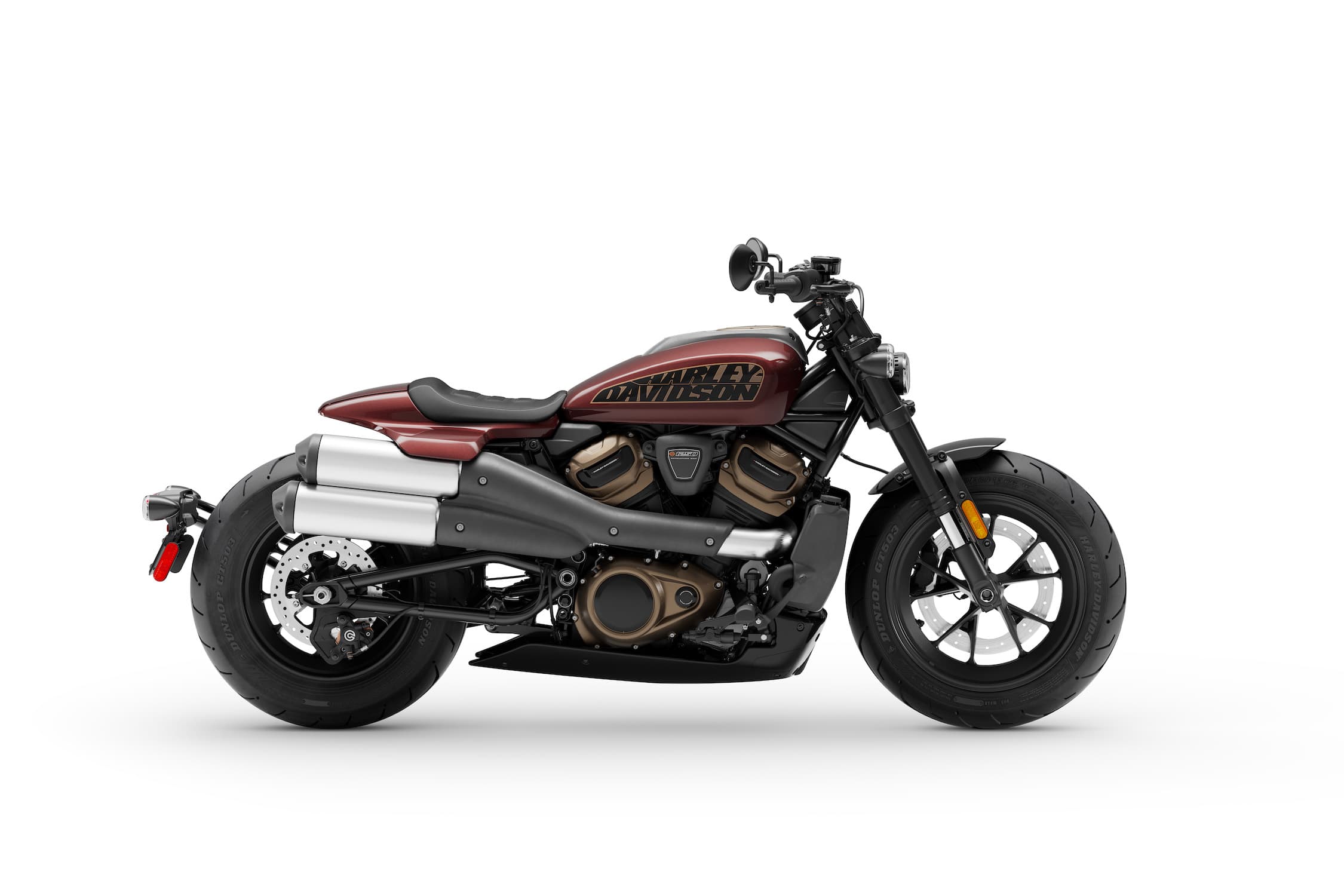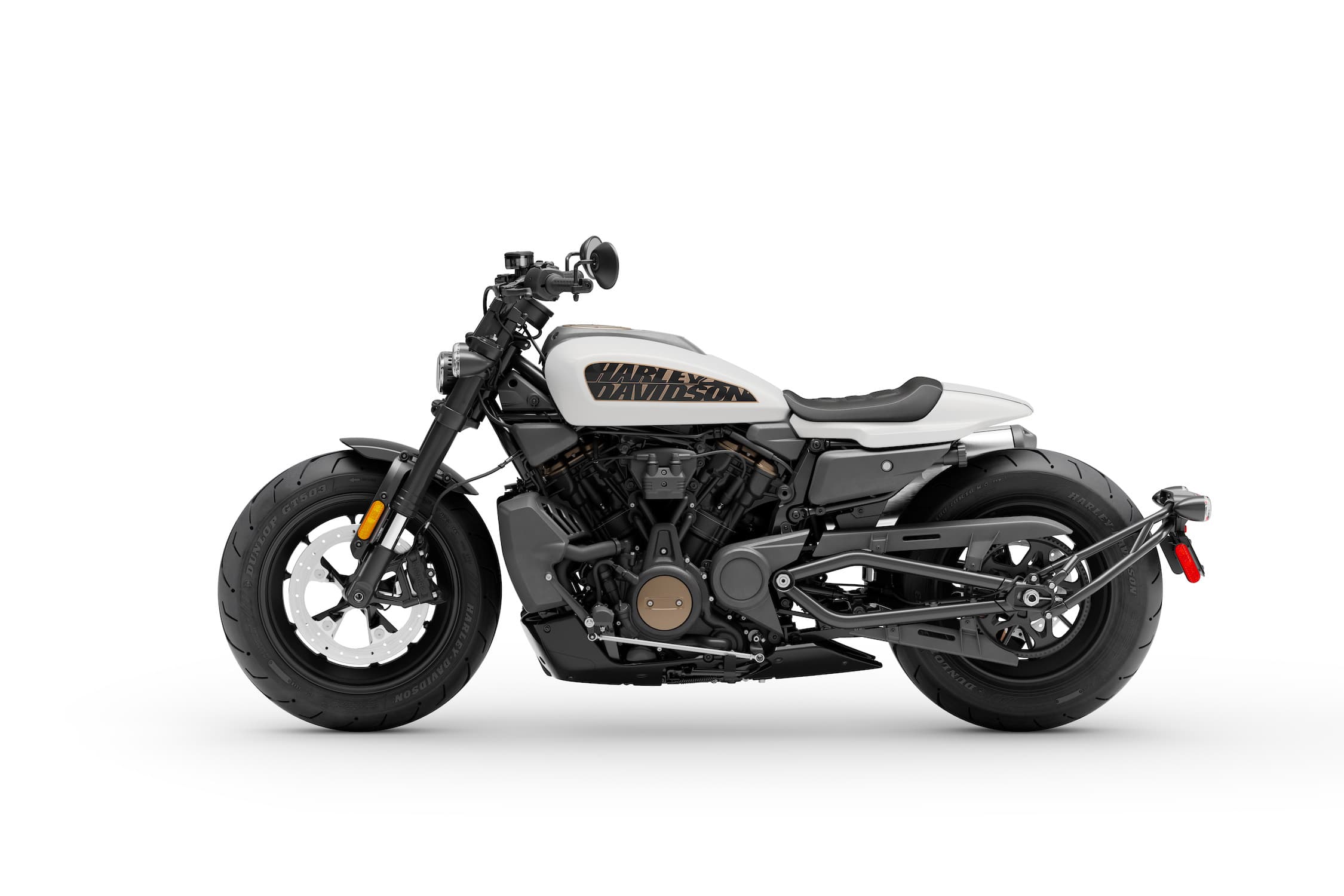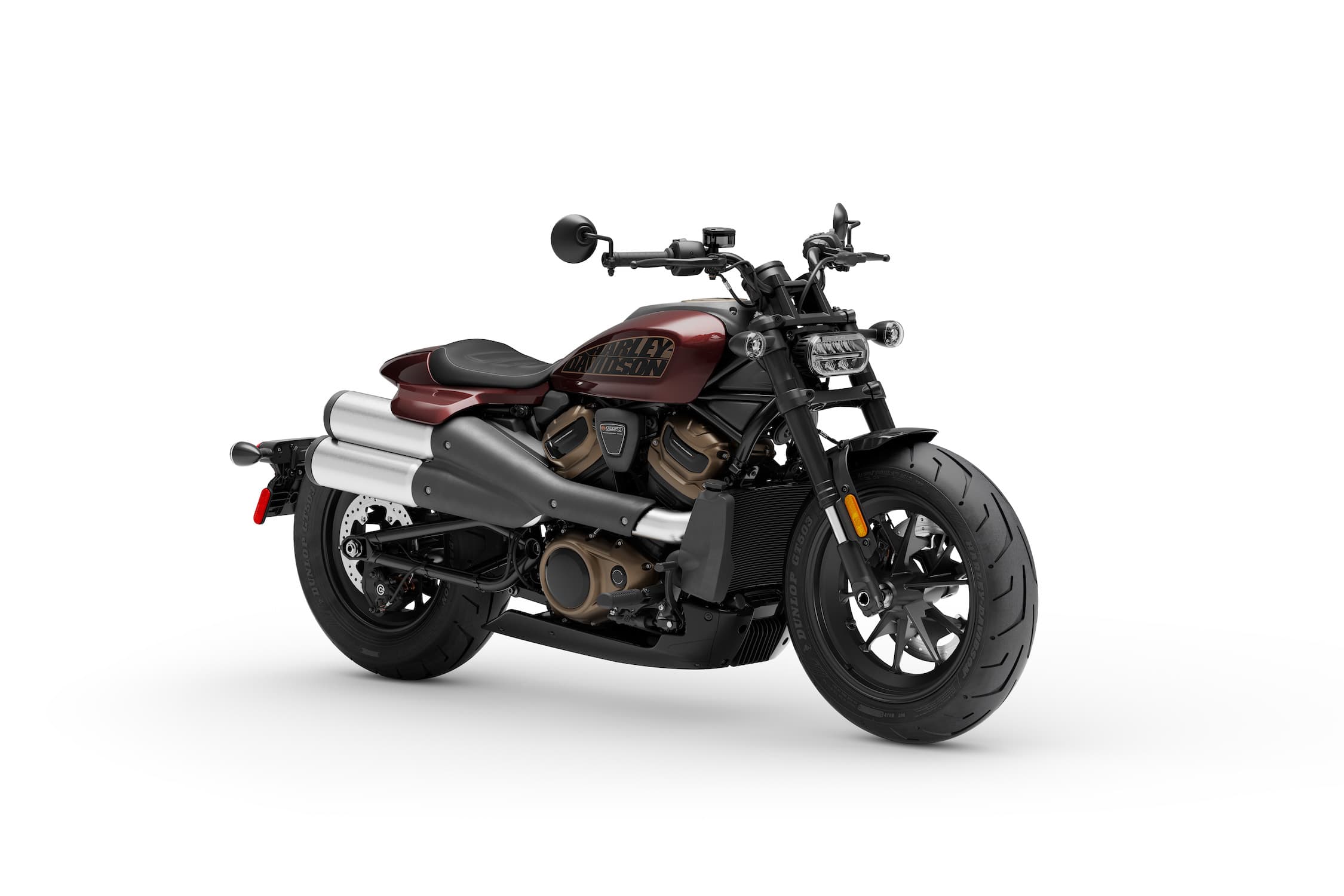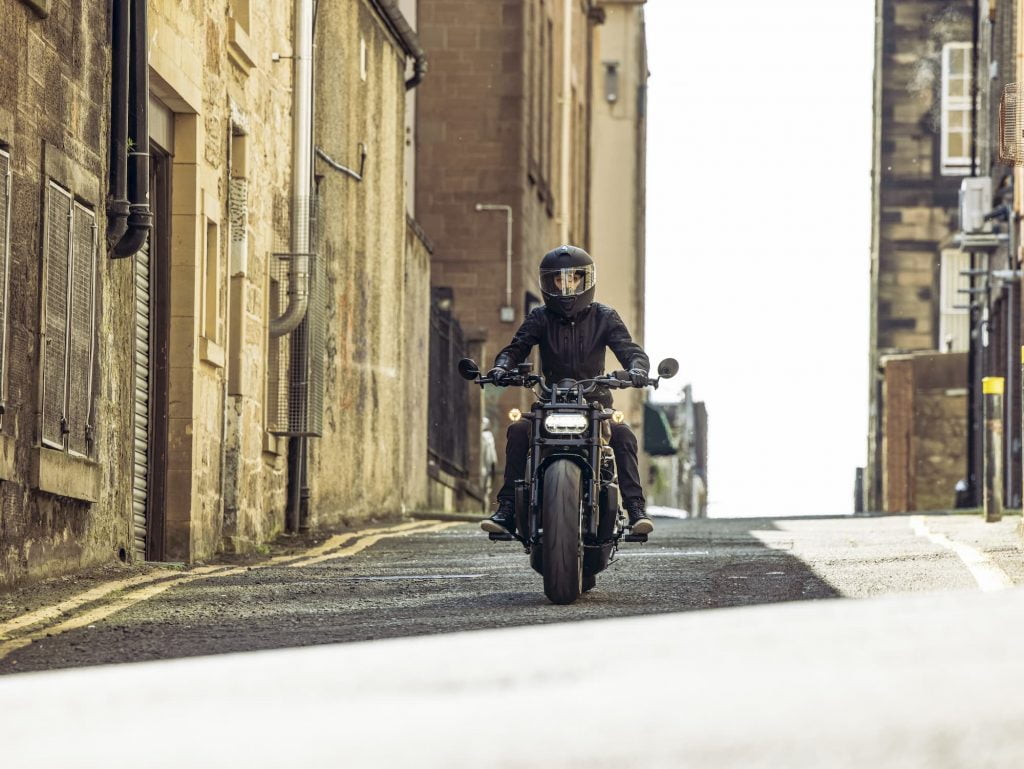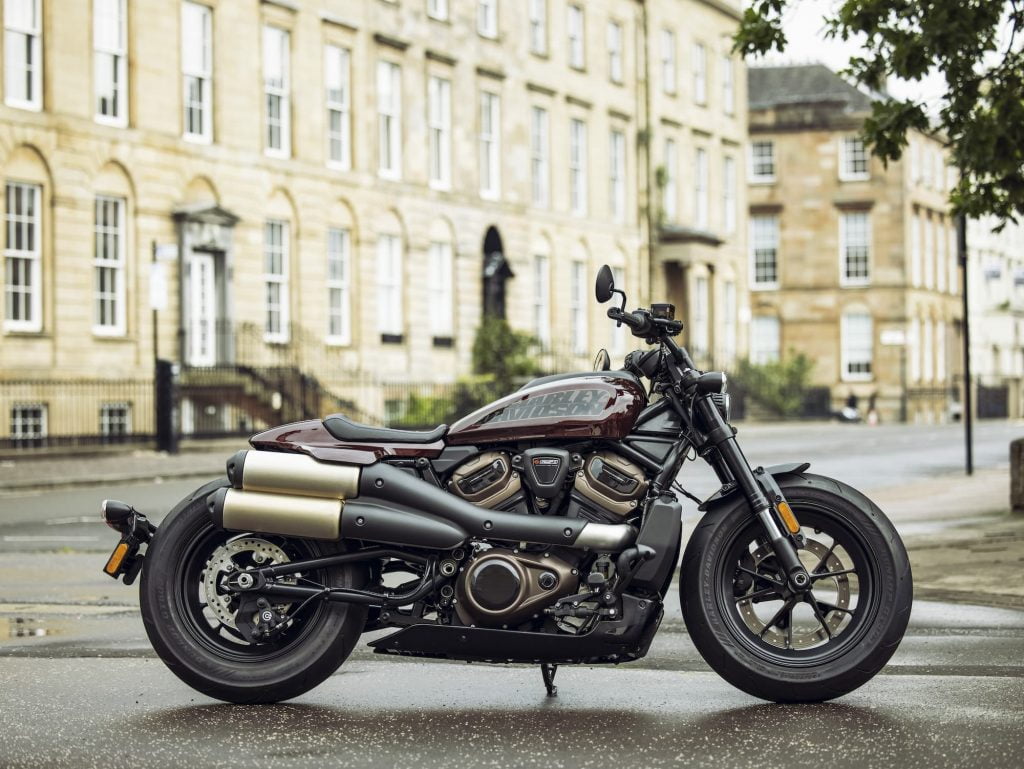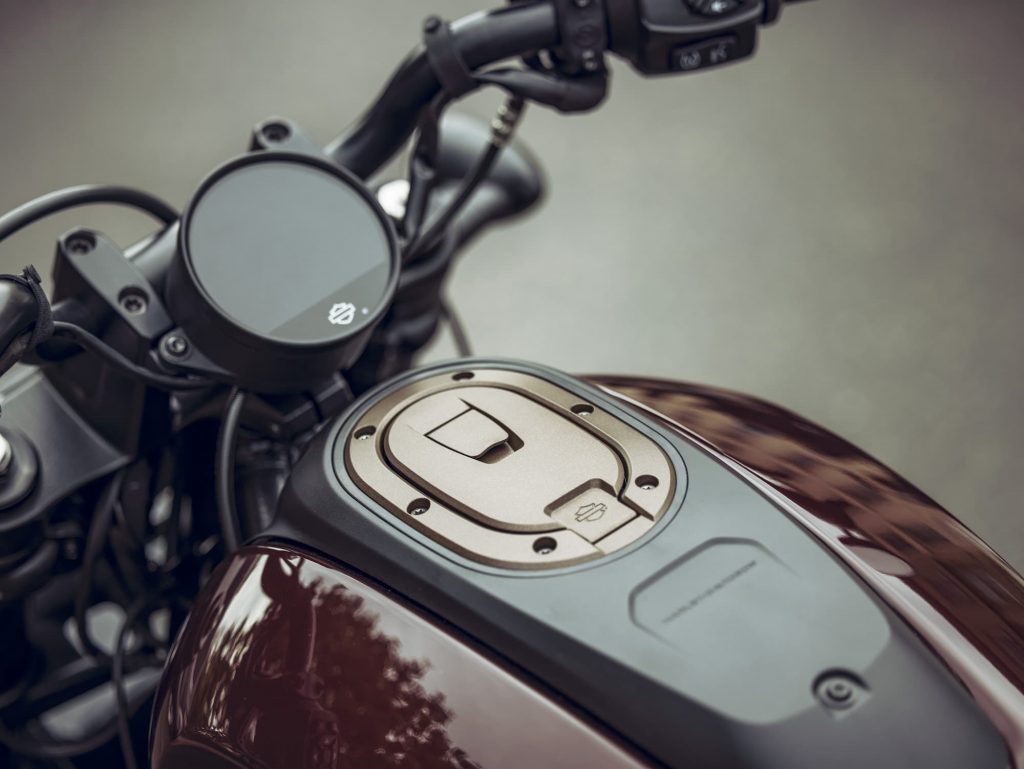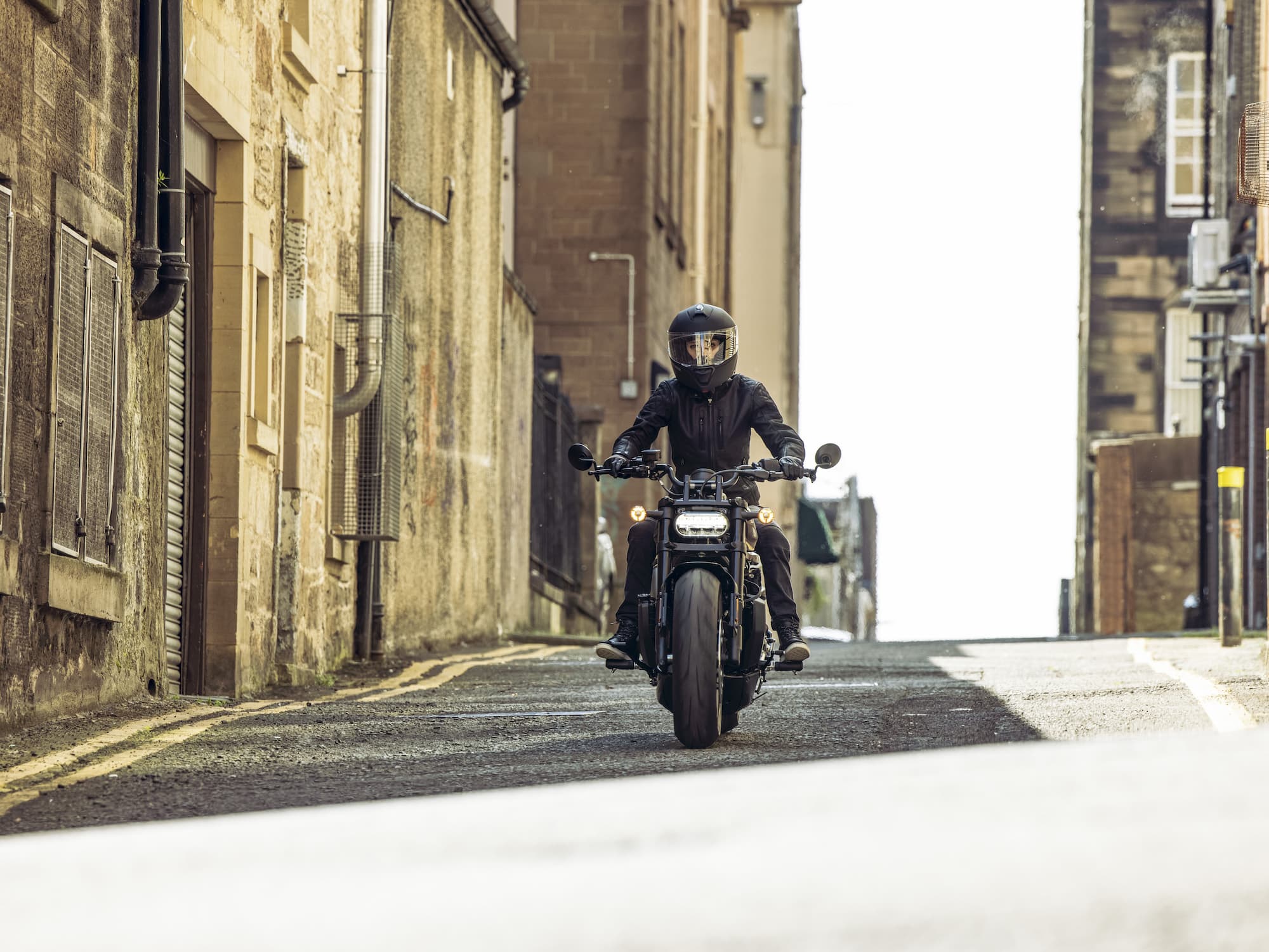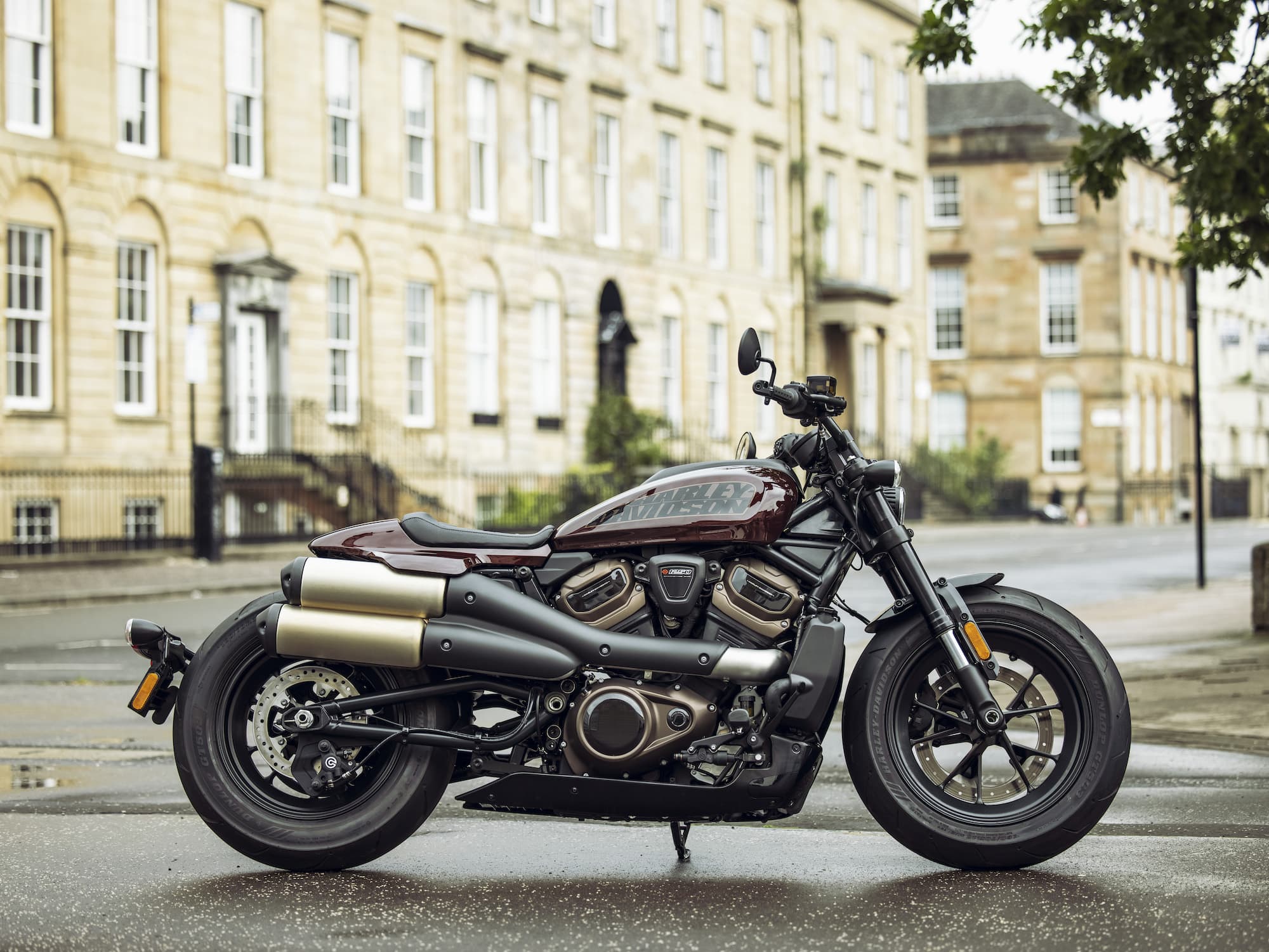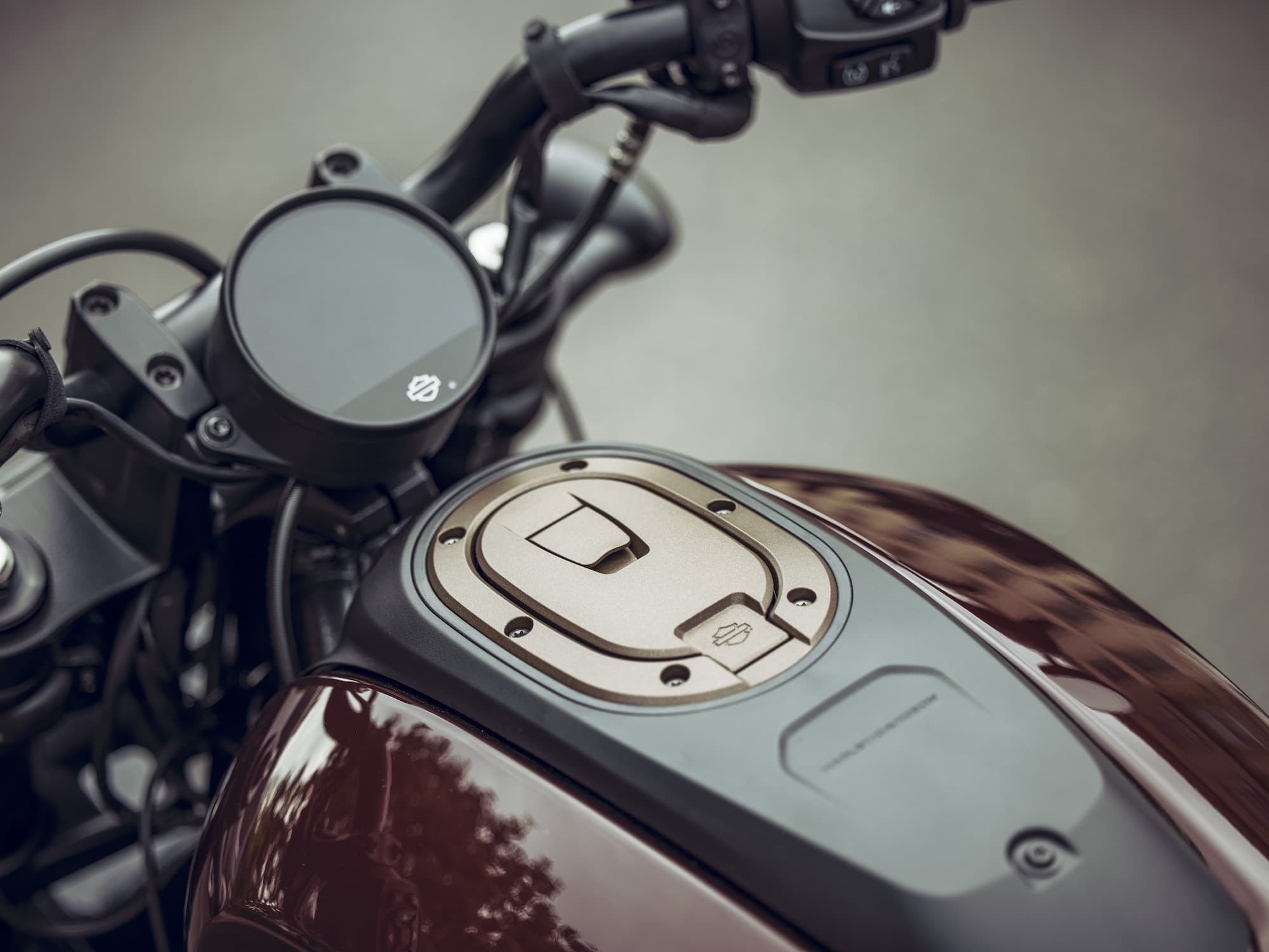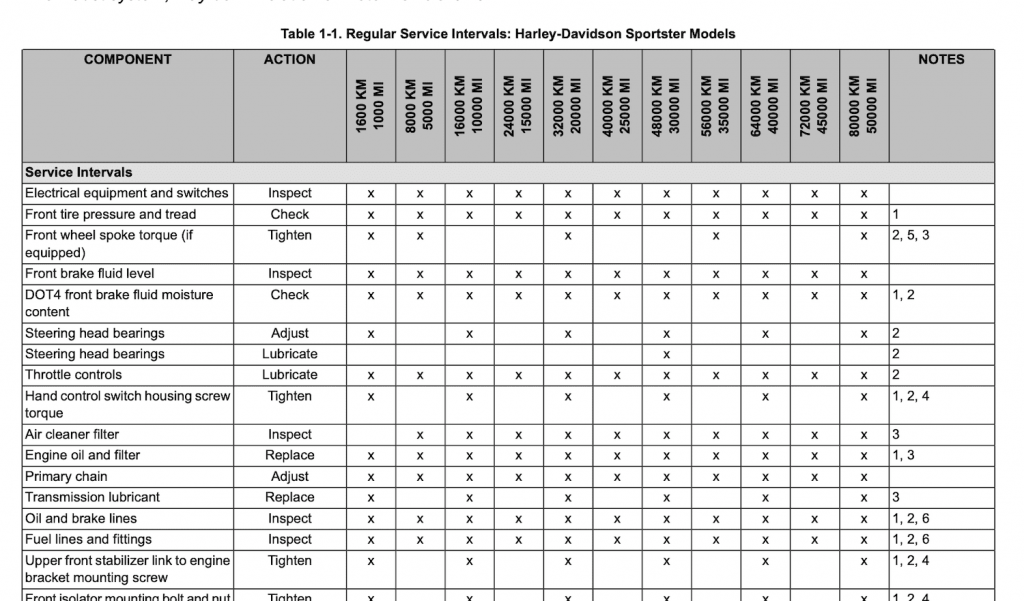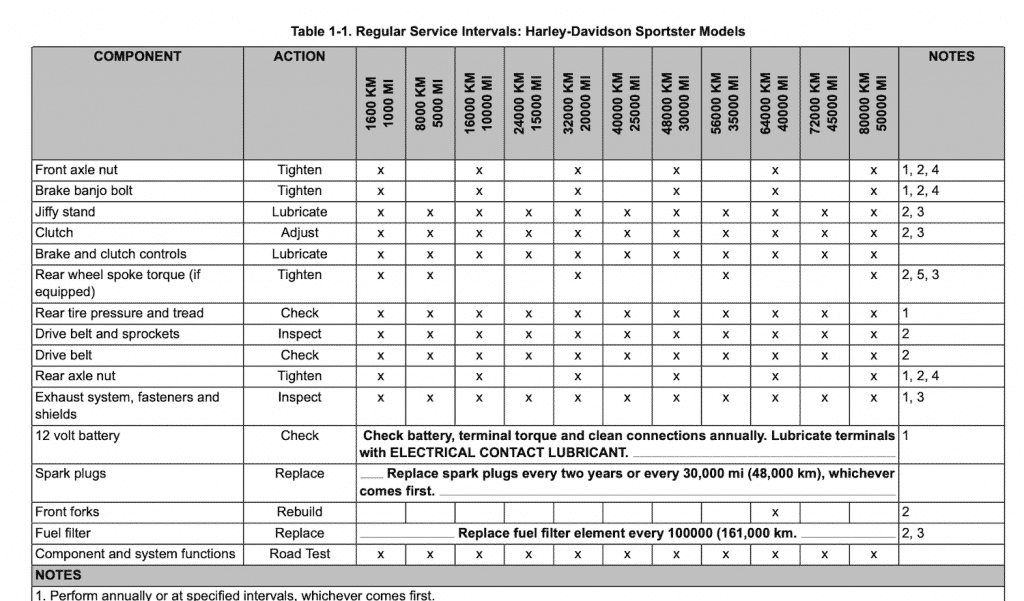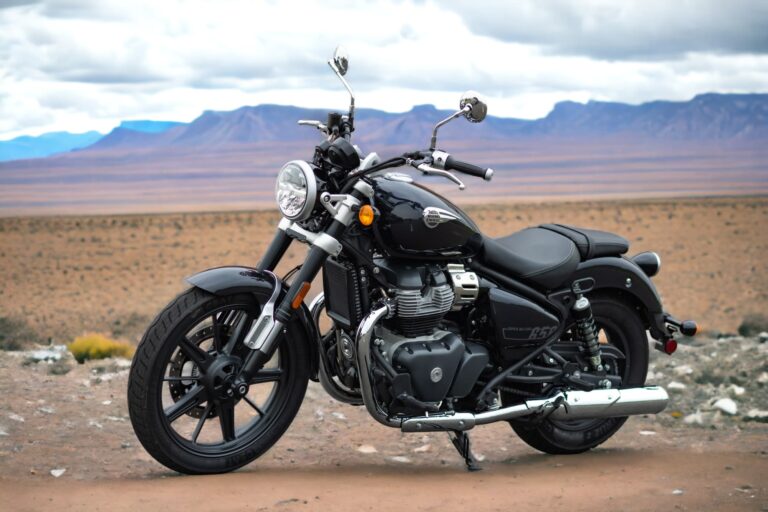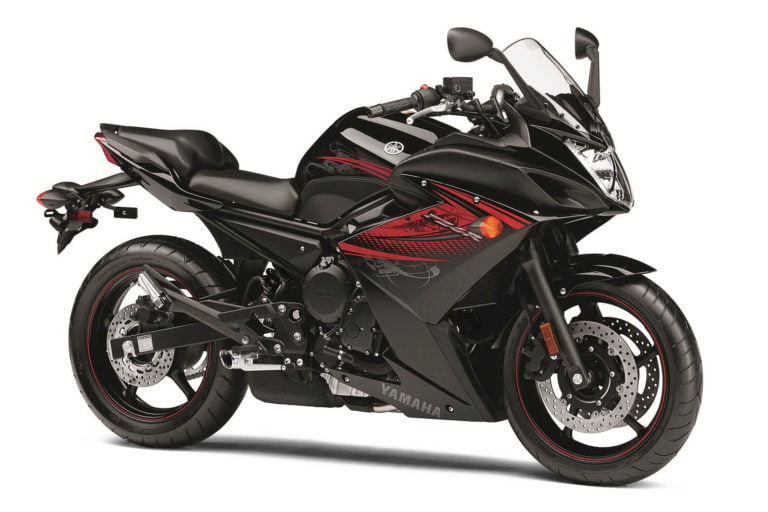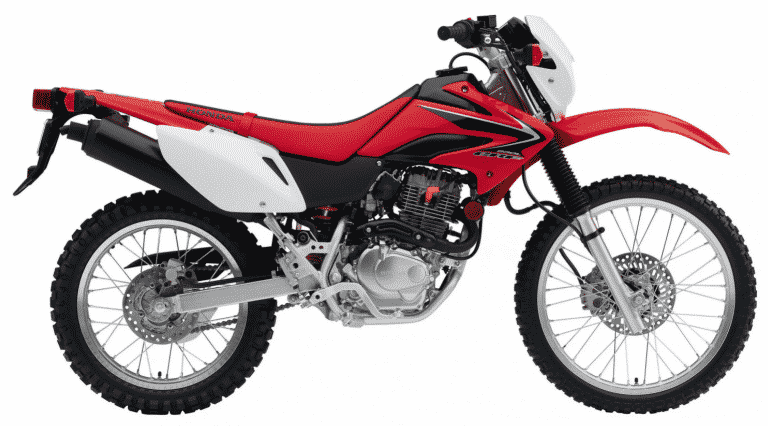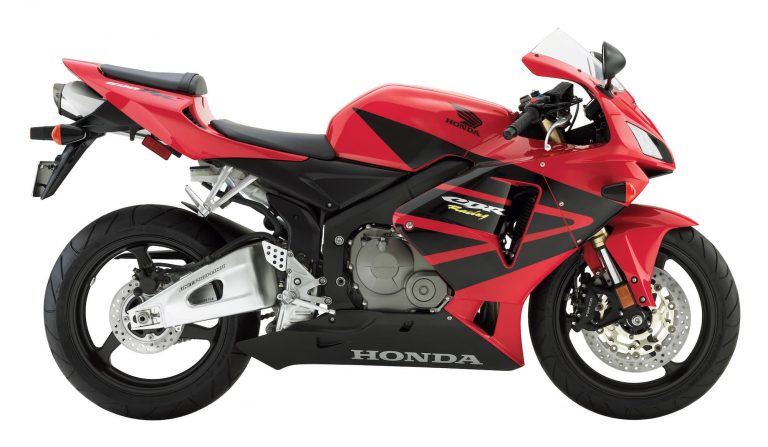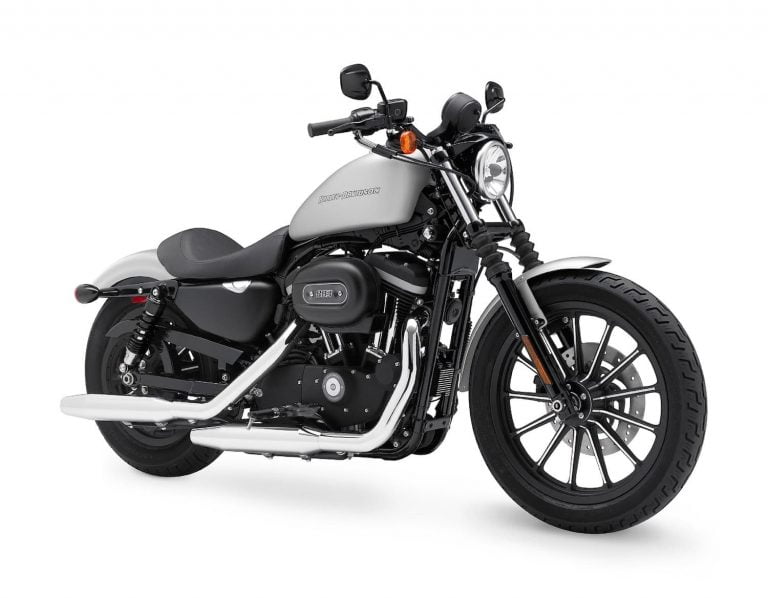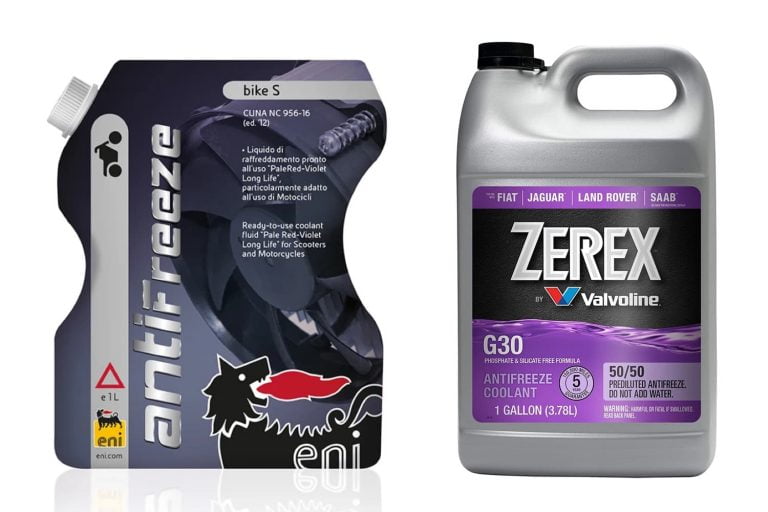Harley-Davidson Sportster S 1250 (RH1250S) Maintenance Schedule and Service Intervals
This is the maintenance schedule and service intervals for the Harley-Davidson Sportster S, a revolutionary new motorcycle that totally turned the Sportster paradigm back to what it used to be — a fast bike.
The Harley-Davidson Sportster S uses the Revolution Max 1250T motor, similar to the one in the Harley-Davidson Pan America, but tuned more for mid-range torque.
In the Sportster S, the Rev Max 1250T is still a DOHC liquid-cooled V-twin engine, but runs a milder 12.0:1 (vs 13.0:1 in the Pan America) compression ratio to produce a peak of 90 kW (121 hp) at 7500 rpm, with the same peak torque of 127 Nm (94 ft-lb) arriving earlier at 6000 rpm.
Similar to the Pan America, The Harley-Davidson Sportster S’s engine has self-adjusting hydraulic valves and thus does not ever need a valve service.
But in contrast with the Pan America, and more in line with most Harley-Davidson bikes, the Sportster S uses a belt final drive.
This site has links for things like oil and spark plugs from which we earn a commission (which unfortunately nobody can save, not even us). If you appreciate this work, then please use those links. Thanks!
Harley-Davidson Sportster S Service Intervals
Generally maintenance for the Harley-Davidson Sportster S can be summarised as
- 5000 mile / 8000 km maintenance intervals where you have to change the oil and filter, and check everything.
- Every two services, tighten everything up back to torque spec, and lubricate major bearings.
- Every 2-4 years replace fluids, or as needed.
Because the Sportster S has self-adjusting hydraulic valves, the valve clearances do not need adjustments.
Maintenance schedule for the Harley-Davidson Sportster S
Below is the service schedule for the Harley-Davidson Sportster S. This comes from the manual, but has been clarified and simplified for legibility.
It has a lot of overlap with the Pan America’s maintenance schedule but has significant differences.
Notes
- Keep following this service interval in the pattern shown.
- Get safety-related equipment, e.g. related to steering, braking, and suspension, serviced by a qualified Harley-Davidson mechanic if you’re unsure.
- Service your Harley-Davidson Sportster S more often if you ride in harsh conditions, e.g. dust, dirt roads, in the rain, and so on.
| mi x 1000 | 1 | 5 | 10 | 15 | 20 | 25 | 30 | |
| km x 1000 | 1.6 | 8 | 16 | 24 | 32 | 40 | 48 | Every |
| Standard service checklist (see below) – Perform | ✓ | ✓ | ✓ | ✓ | ✓ | ✓ | ✓ | Year |
| Replace engine oil Drain plug torque: 20 Nm / 15 lb-ft | ✓ | ✓ | ✓ | ✓ | ✓ | ✓ | ✓ | Year |
| Replace oil filter Oil filter torque: 3-4 turn after contact, by hand (not tool) | ✓ | ✓ | ✓ | ✓ | ✓ | ✓ | ✓ | Year |
| Replace spark plugs | ✓ | 2 years | ||||||
| Replace transmission lubricant | ✓ | ✓ | ✓ | ✓ | ||||
| Replace brake fluid (Castrol DOT 4) | 2 years | |||||||
| (Spoked rims) Check spoke torque, and tighten as necessary | ✓ | ✓ | ✓ | |||||
| Adjust steering head bearings | ✓ | ✓ | ✓ | |||||
| Lubricate steering head bearings | ✓ | |||||||
| Tighten hand control switch housing screw torque | ✓ | ✓ | ✓ | ✓ | Year | |||
| Tighten upper front stabiliser link to engine bracket mounting screw | ✓ | ✓ | ✓ | ✓ | Year | |||
| Tighten front isolator mounting bolt and nut | ✓ | ✓ | ✓ | ✓ | Year | |||
| Tighten axle nuts, front and rear | ✓ | ✓ | ✓ | ✓ | Year | |||
| Tighten brake banjo bolt | ✓ | ✓ | ✓ | ✓ | Year | |||
| Rebuild front forks (Disassemble, inspect, rebuild, replace fork oil) | 40000 mi / 64000 km | |||||||
| Replace fuel filter | 100K mi (160K km) |
Standard service checklist
| Inspect drive belt and sprockets |
| Inspect fuel lines and fittings. Check for leaks, contact, or abrasion. |
| Inspect oil and brake lines. Check for leaks, contact, or abrasion. |
| Inspect air cleaner filter |
| Inspect electrical equipment and switches |
| Check tire pressure and tread (front and rear) |
| Adjust primary chain |
| Inspect brake fluid level (front and rear) |
| Check brake fluid moisture content (front and rear) Replace if moisture content exceeds 3% |
| Inspect brake pads, front and rear |
| Inspect brake discs, front and rear |
| Lubricate throttle controls |
| Lubricate brake and clutch controls |
| Adjust clutch |
| Check 12 volt battery – terminal torque, connection cleanness. Lubricate terminals with contact lubricant |
| Lubricate jiffy stand |
| Inspect exhaust system, fasteners and shields |
| Check component and system functions (Road test) |
Tires sizes for the Harley-Davidson Sportster S
| Wheel | Tyre size |
|---|---|
| Front | 160/70ZR17 73V |
| Rear | 180/70R16 77V |
The Sportster S runs a Dunlop tyre that’s made specifically for the Harley Davidson Sportster S.
About the Harley-Davidson Sportster S
The Harley-Davidson Sportster S was a return to roots for the Sportster line.
Back when it was first created, decades ago, the Sportster was a fast motorcycle, and frequently worked over for all kinds of racing applications.
Since then it has remained fairly constant, and the Sportster had not changed significantly (other than receiving fuel injection) since the mid 80s.
That hasn’t stopped the Sportster from being loved. It’s a gentle, ponderous motorcycle that isn’t designed to be pushed hard. That is, until Harley-Davidson decided to shake things up, and released the Harley-Davidson Sportster S.
The Harley-Davidson Sportster S is a complete redesign from the ground up, sharing only with other Sportsters a name, a brand, and an approximate style. But the new Sportster is a bike that goes, stops, and handles.
At its heart it counts on the same motor as the one in the Pan America — the Revolution Max 1250T. That “T” on the end is a differentiator, and indicates that the 1252 cc 60-degree V-twin is tuned for its torque to come on earlier, at the cost of a little peak power.
The Rev Max 1250T still revs to a healthy 9500 rpm redline — great for a street bike, and sky-high for a Harley-Davidson.
The Sportster S is a huge step forward for the Milwaukee brand. Just a few of the things that changed are
- An all-new liquid-cooled motor that’s larger, more powerful, more reliable (presumably so due to liquid cooling), and more everything. It’s a 1252cc liquid-cooled DOHC V-twin with variable valve timing.
- A round TFT display, retaining a degree of classic-ness (but obviously it’s not an analogue tach)
- Ride modes
- Cornering ABS and traction control, thanks to a six-axis IMU
- Drag-torque slip control to prevent wheel slips after abrupt downshifts
- Cruise control
- A tyre pressure monitoring system
The engine has a 90-degree firing order (it’s a 60-degree V-twin but there’s a 30-degree offset in the crank).
The torque is delivered mostly in the midrange, with a wall of torque all the way from 3750 to 7500 rpm. So punting it around in the middle of the rev range can be a lot of fun.
The first reminder that the Harley-Davidson Sportster S isn’t a full-on sports bike is the riding position and fat front tyre. You plough into corners feet first, and have to push more on the handlebar to than you normally would with a small sportbike front tyre. Luckily the handlebar is quite large, giving you quite a lot of leverage.
The second reminder is that the Harley-Davidson Sportster S only has one front disc brake. Oh well, fewer pads to replace I guess… At any rate, while the Sportster S could benefit from dual discs, most riders don’t feel that it’s lacking.
On top of the ride experience is the ownership experience. The new Harley-Davidson Sportster S’ Rev Max engine retains one of the important parts of the old Sportster line — low maintenance. Thanks to hydraulic valve lifters, the new Sportster S doesn’t need to have its valves serviced. And a belt drive means that aside from retensioning, little else is needed until you replace it every 30000 miles (48000 km) or so — not in the schedule, by the way.
The Sportster S has a responsive engine that makes good power for its class, without wandering into the territory of high-performance nakeds like the Ducati Monster 1200 S.
Harley-Davidson’s second motorcycle in the Sportster RH lineup is the 2022+ Harley-Davidson Nightster RH975.
Manual for the Harley-Davidson Sportster S
The above maintenance schedule came from the manual for the Harley-Davidson Sportster S.
You can find it online here.
